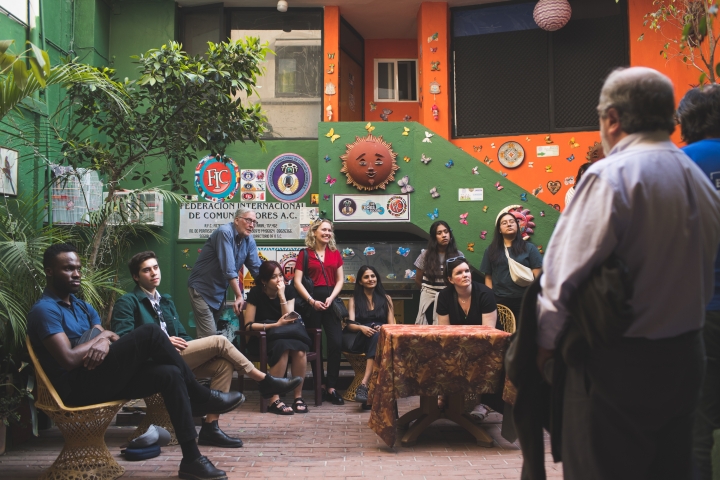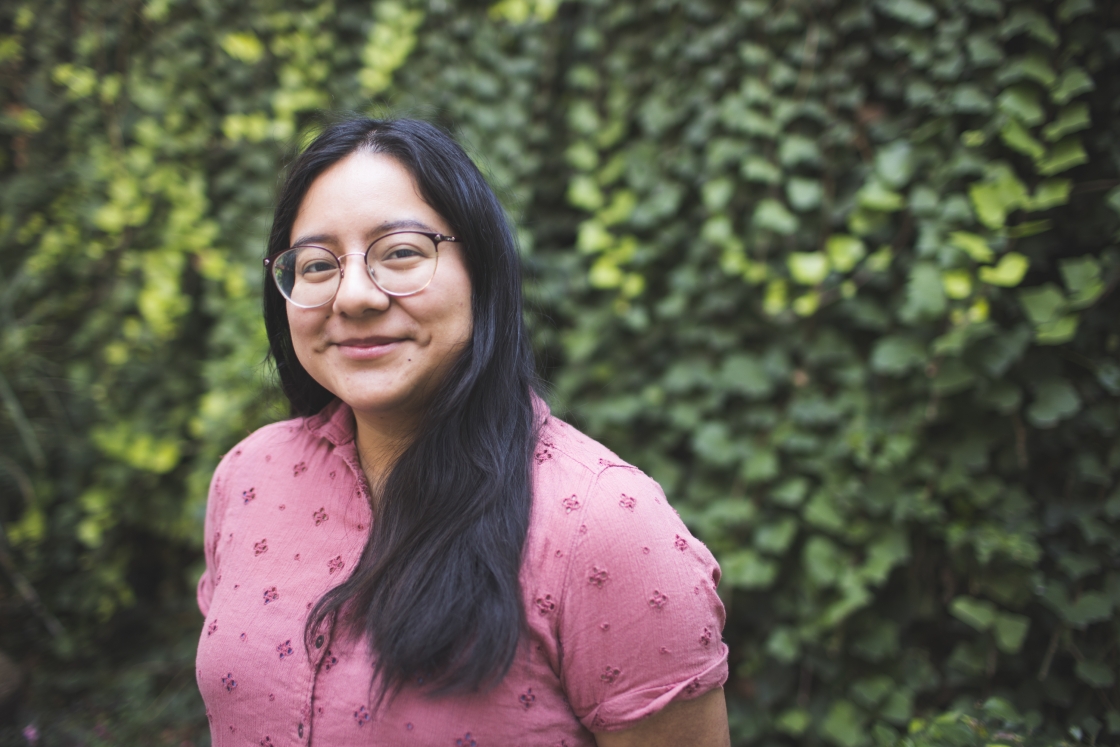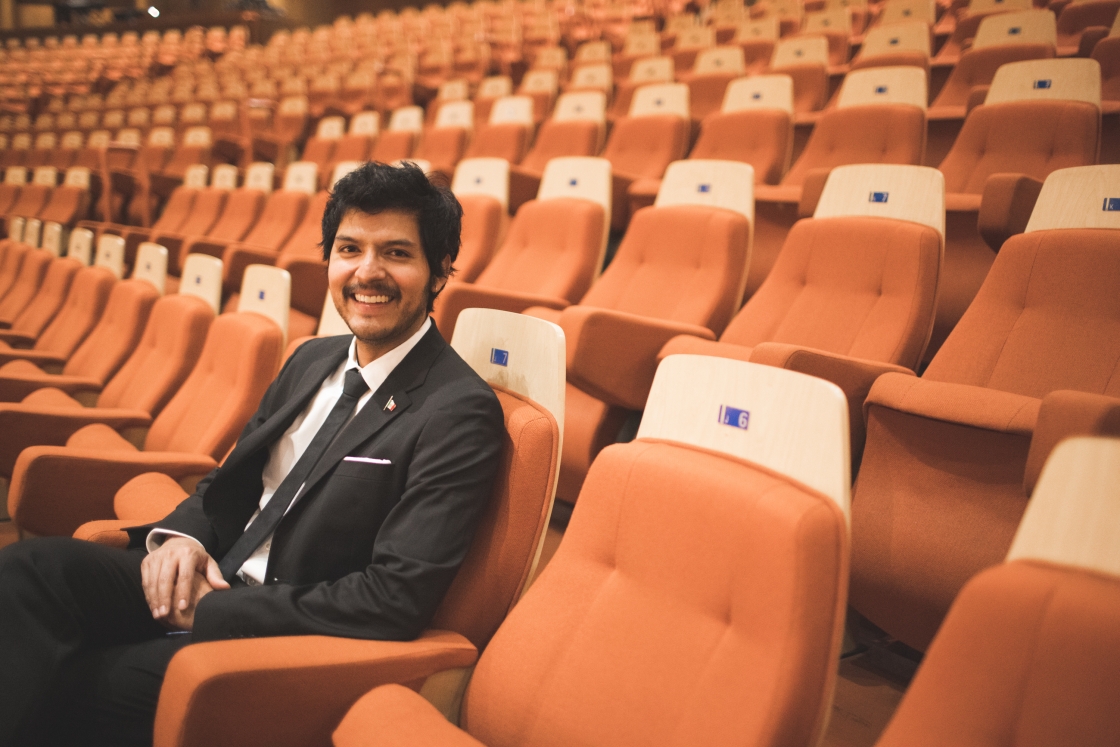From performing in one of Latin America’s premier concert halls to seeing, firsthand, efforts to safeguard Indigenous heritage, more than 60 Dartmouth students immersed themselves in the culture of Mexico City during two very different, if equally unforgettable, trips over spring break.
Last month, 10 students joined the Magnuson Center for Entrepreneurship and the Rassias Center for a weeklong exploration of social entrepreneurship. Nearby, the 50-member Dartmouth College Wind Ensemble was on a musical journey showcasing new work by Mexican composers.
The trips converged for a wind ensemble performance on March 24, the day before the students, faculty, and staff departed the city, carrying with them what many participants described as a deeper sense of connection with each other and their Mexican counterparts.
Each trip was part of a broader initiative. The wind ensemble tour grew out of the Mexican Repertoire Initiative at Dartmouth, which aims to bring Mexican compositions to the international stage and provide opportunities for Mexican composers. And the Magnuson’s Social Entrepreneurship Experience reflects the center’s growing focus on societal issues.
The Magnuson-Rassias Social Entrepreneurship experience
“Sometimes people think entrepreneurship is just Silicon Valley or other for-profit businesses,” says Jamie Coughlin, the center’s founding director. But Magnuson’s Social Entrepreneurship program, launched in 2021, gives students pathways for developing socially inspired business ideas and bringing students, faculty and staff together around issues like environmental conservation and sustainable economic development.
Last month’s interactive trip took students “into a market that has some of those elements,” Coughlin says.
Starting with the pandemic, Mexico City has seen a huge influx of digital nomads and a spike in start-ups, says Kathleen Burke, a program manager at Magnuson who co-led the trip.
Among those are social entrepreneurs who have designed business models to address problems ranging from corruption and election fraud to climate change and economic development.
“We knew that Mexico City would embody the spirit of resilience that social entrepreneurship necessitates,” Burke says.
During their week in Mexico City and the surrounding areas, students got an up-close look at social entrepreneur-led ventures.
Traveling by bus, they met a politician and founder of the nonprofit Mexicans Against Corruption and Impunity, who described the challenges he faces in his work, and how he employs creativity to surmount them.
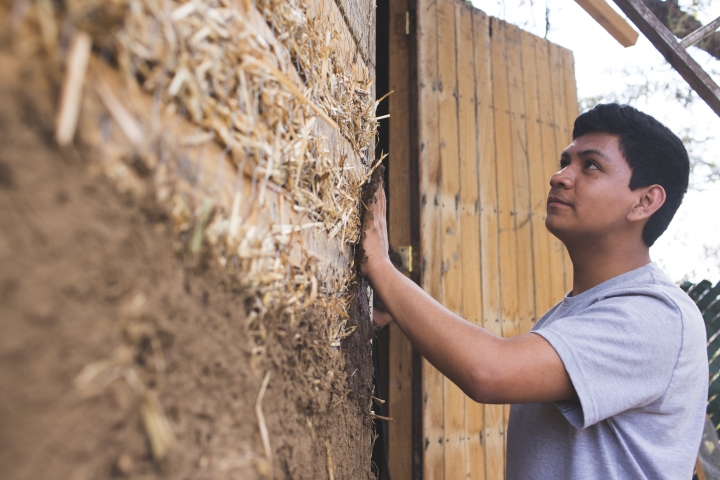
At Ehecalli, an innovative ecotourism center, they built a composting toilet, experienced a traditional sweat lodge, and conversed at length with founder Nando Ausín ’06 about sustainability, including just how much there is to learn from indigenous populations. They toured Xochimilco Ecological Park and Plant Market, a 400-acre reserve that utilizes ancient farming methods to grow food in a sustainable way.
For Yuniza Limeta ’24, of Los Angeles, seeing the park’s floating gardens, or chinampas, was a highlight.
“It was amazing to see people continuing to use chinampas as a form of traditional indigenous agriculture,” says Limeta, a geography major minoring in human-centered design. “Hearing others spotlight a food-growing tradition of hundreds or thousands of years as nothing alternative, but an environmentally sustainable legacy, was thrilling.”
John Ejiogu ’23, who is from Nigeria, says the week in Mexico has already changed his life—the way he talks with friends who are struggling, his approach to challenges, and even how he no longer leaves the water running when he brushes his teeth.
The economics major has been involved with the Dartmouth Center for Social Impact throughout his time in Hanover and is interested in how standards of living in developing countries could be improved for a majority of the population.
“All of the activities we did were connected to making the world a better place,” Ejiogu says.
Yet another facet of the program involved a visit to the building where Mexican artist José Clemente Orozco lived and had his studio, which is now home to a Quaker library and meeting room. Orozco’s mural The Epic of American Civilization, painted between 1932 and 1934, is one of Dartmouth’s artistic treasures.
In addition to Burke and Maggie Ronan, who is the Magnuson program manager for startup support, the students were accompanied by Helene Catherine Rassias-Miles, director Dartmouth’s Rassias Center for World Languages and Cultures, and Jim Citron, a lecturer in the Department of Spanish and Portuguese.
As Magnuson expands its social entrepreneurship programs, the partnership with Rassias Center is just one way Magnuson is leveraging expertise across campus, says Coughlin.
Magnuson has recently begun working to create curricular offerings, says Coughlin. A credit-bearing Arts Entrepreneurship course in the Department of Music he developed with wind ensemble director Brian Messier debuted this term. The class has been well-received, with about 30 students enrolled, representing interests ranging from theater to studio art.
Wind ensemble shares music
Collaboration was also integral to the wind ensemble trip. It showcased new works by Mexican composers, most of which were commissioned by Hopkins Center for the Arts or created through the Mexican Repertoire Initiative, which Messier founded.
Having been postponed by the pandemic, the visit to Mexico City represents the culmination of several years’ work.
“This is our first opportunity to really share this music, not only here in the U.S., but with our Mexican partners in this music making,” says Messier. “It’s a really exciting time to bring the people together around this music.”
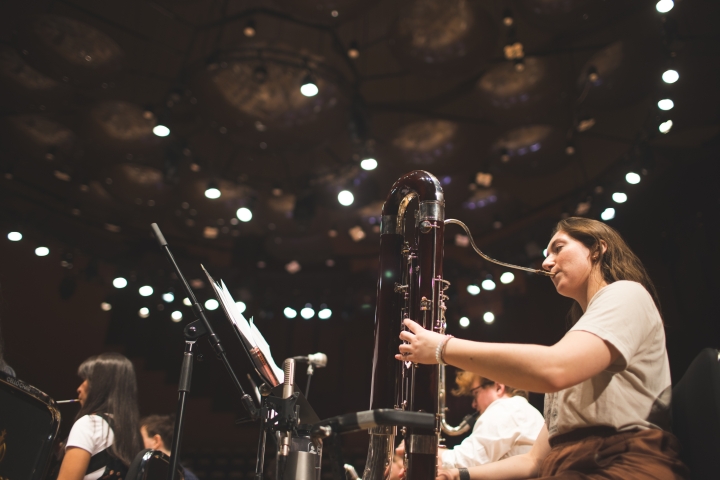
Throughout the week, the wind ensemble teamed up with two local bands—first, the community-based Centro de Capacitación de Música de Banda, and later Banda Sinfónica de la Facultad de Música de la Universidad Nacional Autónoma de México.
The students rehearsed, side by side, for hours. They shared meals and laughs. Then, they took to the stage for performances in two venerable concert halls, where appreciative audiences included most of the composers whose works were being performed.
Rodrigo “Roy” Martínez Torres, a digital musics graduate student in the Guarini School of Graduate and Advanced Studies, was sitting with the other composers when he heard his Onda Tropical performed live for the first and second times, in Teatro Principal, Puebla, and Sala Nezahualcóyotl.
“We would all be crying,” said Martínez Torres, who collaborated with Abi Pak ’26 on the Hop-commissioned selection for diatonic accordion and wind ensemble.
Martínez Torres says Pak “did an amazing job” performing the piece, which includes plenty of space for improvisation.
“Sometimes, as a creator, you want to just focus on your own idea as the sole and final one,” but leaving the accordion part in Pak’s hands was the best choice, he says. “I can trust that she’ll do better than I can in writing any type of melody, and she trusted me in organizing the whole narrative.”
Messier says the programs, which consisted solely of original Mexican music, were highly unusual.
Public school music programs in the U.S. usually include wind ensembles, but wind bands in Mexico are community-based, and typically lack funds to buy or commission music, so they often rely on handwritten transcriptions, he says. And as in the U.S., music in Mexico “has been very Eurocentric.”
And Martínez Torres describes the Mexican Repertoire Initiative as a “very fortunate merging” of needs: that of a burgeoning musical culture in Mexico “that wants to get out,” and of “really amazing ensembles that you can find all over the U.S. to play it.”
Oboist Sophia Sulimirski ’23, student manager of the wind ensemble, says she wasn’t sure what to expect from the trip.
But from playing with guest conductors, to interacting with the composers, to just getting lunch with the other musicians, it “blew my expectations out of the park,” says Sulimirski, an environmental studies and biology major from Westchester County, N.Y. “I made so many new friendships and watched so many new friendships emerge.”
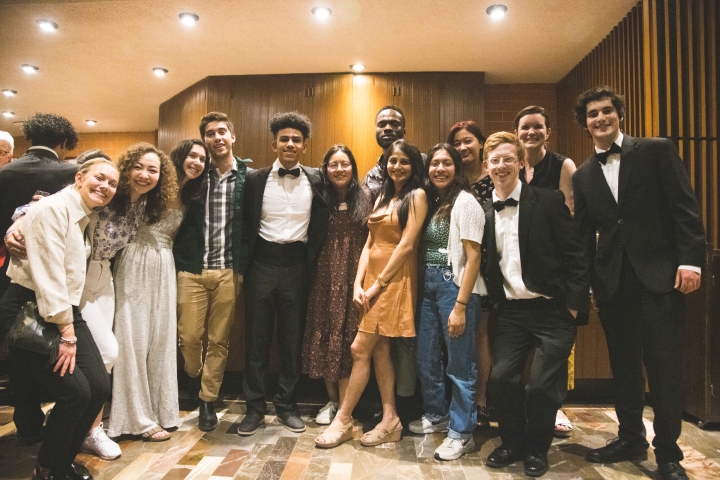
That struck him as well, says Messier, who found himself tearing up during a rehearsal.
The moment a conductor stopped to review a passage, the students from Dartmouth and the Mexican bands started chatting, even though many of them didn’t speak the same language. “It was like any band room, any music rehearsal where they’re talking and you’re like, ‘Guys, settle down,’” he says.
The next day, Messier shared his observation with the students.
“The fact that everyone in between sets is just chatting is exactly why we’re here,” Sulimirski recalls him saying. “You guys are being super obnoxious, but it’s fantastic.”
It was one of her favorite moments, Sulimirski says. “It was really touching to see that this is ultimately why we are here, to make those connections and to play awesome music.”
Photos of Magnuson Trip Photos of Wind Ensemble Trip
Trips Coverage Roundup
